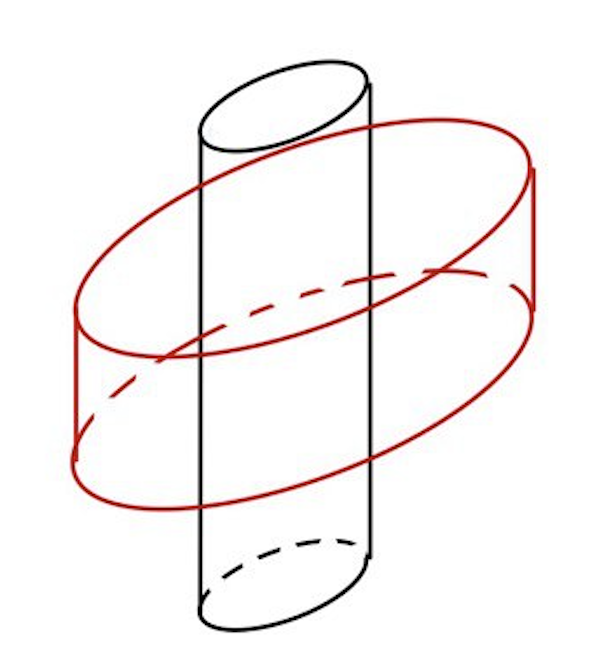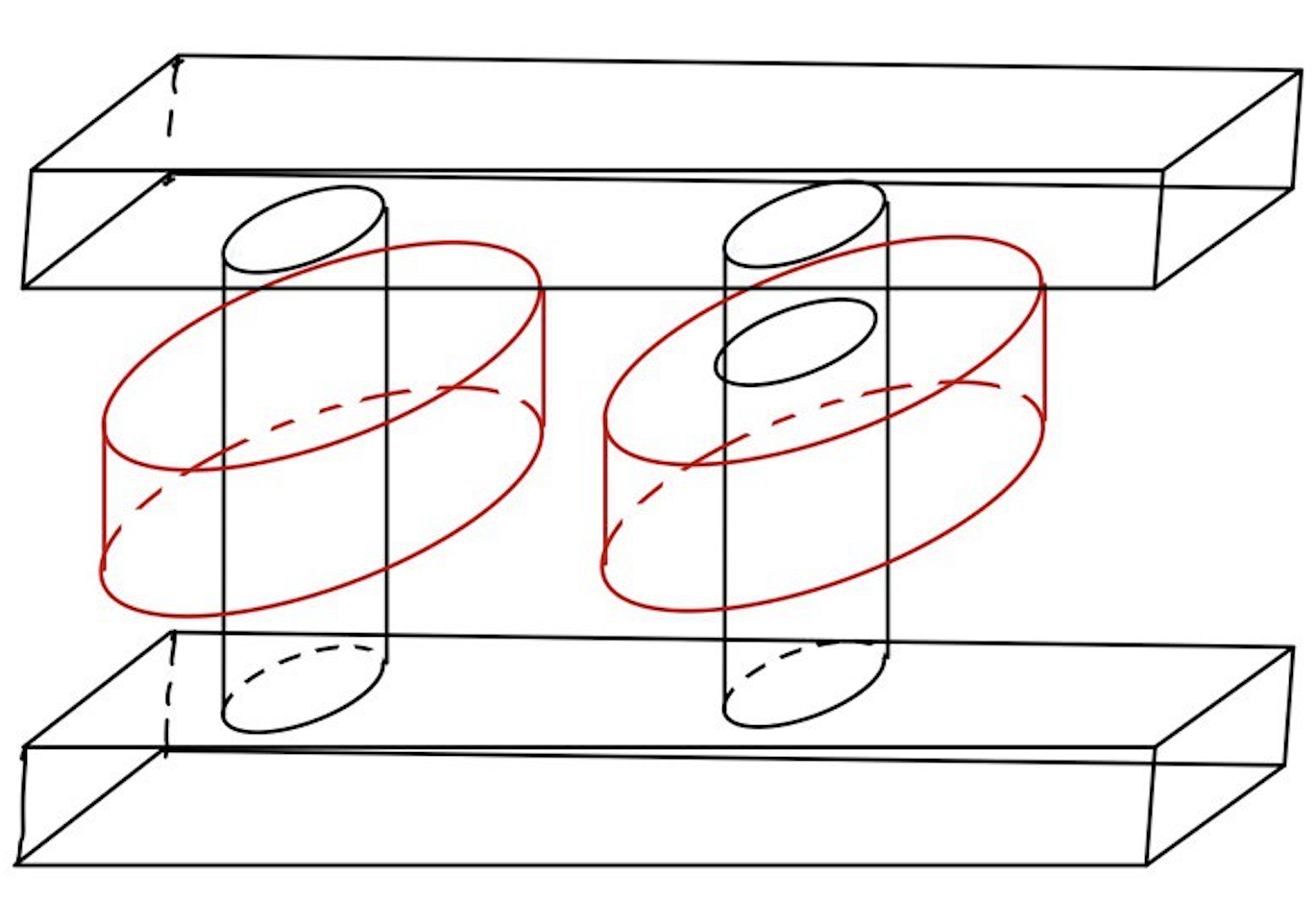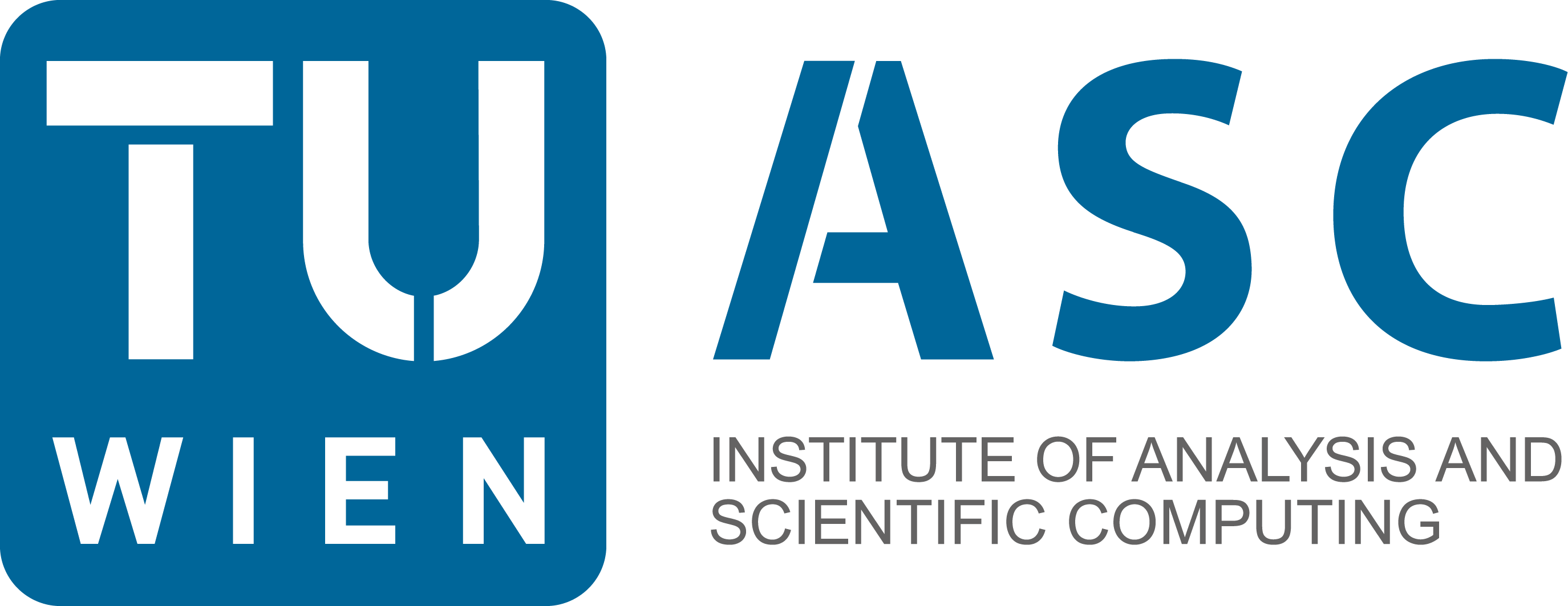27.4. Exercises#
27.4.1. permanent magnet#
Replace the coil by a cylindrical bar magnet. The VF is
where the magnetization \(M\) is a vectorfield pointing in the direction of the bar magnet.
27.4.2. coil with iron core#
put a highly permeable iron core (\(\mu_r = 10^4\)) inside a coil. Plot the magnetic field

27.4.3. model a simple transformer#
It consists of a primary and a secondary coil, with cylindrical iron cores (limbs) through them. To form a closed core, connect the cores with iron bars at top and bottom. A real transformer is shown here: https://jschoeberl.github.io/talk-pdesoft/transformer/transformer.html
What is the generated voltage measured at the secondary coil ?
Use a time-harmonic current source \(j(x,t) = e^{i \omega t} j(x)\), which leads to a time-harmonic vector potential \(A(x,t) = e^{i \omega t} A(x)\).
The voltage is the electric field integrated along the wire: \(\int_C E \cdot d\tau\). Assume the secondary coil consists of \(N\) closed turns.

27.4.4. Eddy current problem#
Assume we have a coil with AC current \(j(x,t) = e^{i \omega t} j(x)\), and we have a conduction (an aluminium block) next to the coil.
The Eddy current approximation in frequency domain is
The term \(j_{Eddy} := i \omega \sigma A\) are the induced Eddy currents in the conductor. An example is here: https://ngsolve.github.io/TEAM-problems/TEAM-7/team7.html
